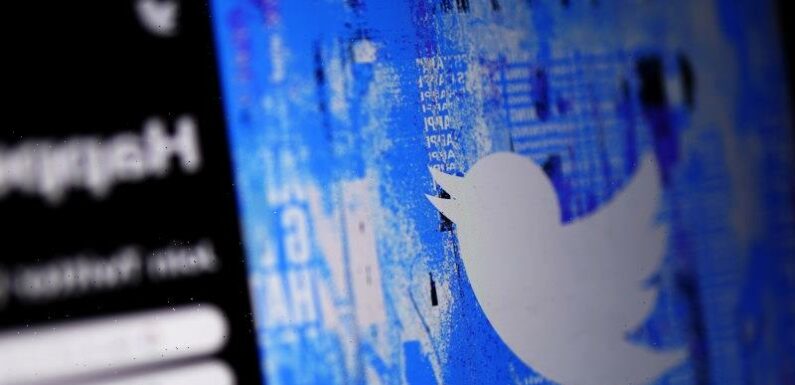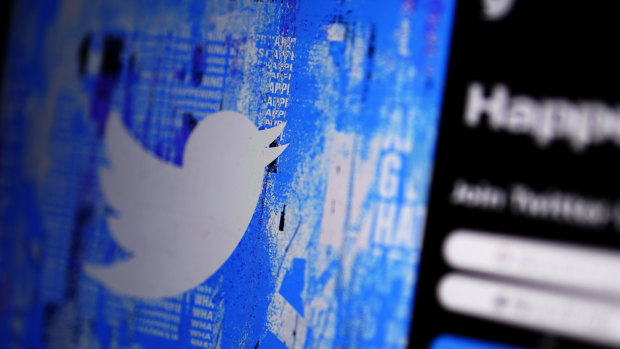
If you’ve been on Twitter at any point in the past three weeks, you’ve probably noticed a lot of people are talking about its death. Elon Musk’s takeover and radical, rapid-fire changes have eroded user confidence in the platform, killed ad spend and sent half the company’s global workforce packing. So what’s the damage so far, and what does the future look like for Twitter?
Musk took control of Twitter on October 27, and his first move was to sack key executives at the company and dissolve the board of directors. In the week following, he laid off roughly half the company’s 7500 employees, as well as thousands of contract employees, seemingly obliterating much of the company’s safety, communications, accessibility and moderation teams.
Twitter’s still standing, but users and experts have concerns.Credit:AP
Also in that first week the service had an enormous surge in racist slurs – whether that was a result of reduced moderation or just individuals feeling emboldened by the change of management – and it was reported that Musk was desperate to find ways to monetise Twitter and make billions in operational savings to help recoup some of his $US44 billion ($66 billion) investment.
Unfortunately for Musk, on November 4 he tweeted that Twitter had experienced a “massive drop” in revenue, which he blamed on activist groups pressuring advertisers to pull their campaigns. It is true that advocacy groups had raised concerns that Musk’s planned changes would negatively affect misinformation and harassment issues on the site, but it’s not clear whether that factored into the advertising exodus.
In a sign that his success at Tesla and SpaceX had not necessarily prepared him for running a media business, Musk responded by threatening and insulting advertisers on Twitter.
After that, Twitter rolled out Musk’s proposed changes to subscription service Twitter Blue, which allowed any user to gain a blue tick next to their name by paying a monthly fee. This had been a sign that the account was verified as belonging to a notable person, outlet or agency. And it’s here that the most publicly visible issues began to arise.
While Musk had long argued that the verification system was classist and should be abolished, the new system resulted in an immediate explosion of false accounts that to most users looked perfectly legitimate. Some at Twitter scrambled to institute a new “official” label to make it clear which accounts were trustworthy, but Musk shut that down. And it has emerged that Twitter’s safety team warned Musk about the dangers of revoking real verification, with a prescient seven-page report that forecast negative impacts on advertisers and trust.
After the change, tweets from accounts claiming to be military contractor Lockheed Martin (saying it would no longer sell weapons to Israel) and pharmaceutical company Eli Lilly (saying insulin would be made available free in the US) appeared to affect the actual companies’ stock prices. And the endless impersonations – including a legitimate-looking Nintendo account posting a picture of Mario flipping the bird – didn’t do much to convince advertisers to spend. In fact, advertising giants IPG, GroupM and Omnicom are all recommending that clients pause spending. The Musk-run SpaceX, at least, is not listening to that advice, purchasing takeover ad packages on Twitter to be shown in Australia and Spain. Twitter has paused its Blue subscription service, although Musk says it will be back at the end of the month.
Musk has said he intends to keep pushing Twitter to develop features quickly, roll out and withdraw “dumb things” to see what works, and develop a culture of “hardcore” coding and growth. But aside from that making things confusing and scary for users, it has stability and security implications too.
“If changes are introduced at any organisation without proper testing, there is always the possibility that users could be exposed to more attacks. A platform the size and scale of Twitter, with millions of users worldwide, could have severe consequences if security is not prioritised.” said Sherrod DeGrippo, vice-president at threat research firm Proofpoint.
Musk has made claims about Twitter only to be corrected by the platform’s own fact-checking apparatus.
“The rapid changes that are happening at Twitter have generated headlines worldwide. This adds to the potential threat, as cyber criminals commonly use themes related to major news items or human interest stories, and social engineering tactics to evoke action.”
Cloud security firm Mimecast also reported a surge in criminal activity leveraging the Twitter verification chaos. Musk continues to blame activists and trolls, and has a tendency to dog-whistle to his dedicated fan base when questioned.
When a US congressman called Musk out on the safety implications of the blue-tick changes, Musk insulted him and wondered why he was wearing a mask in his profile picture. In several cases, Musk has made claims about Twitter only to be corrected by the platform’s own fact-checking apparatus, which he has largely gutted. He’s also claimed to have fired employees for correcting him publicly on Twitter, and many employees have taken to Twitter to say they were fired over disagreements.
Musk’s behaviour on Twitter, which paints a picture of a person who takes criticism extremely personally, tweets impulsively and compulsively, and doesn’t care if his $US44 billion investment results in the destruction of the entire service, appears to be the key driver of concerns for the platform’s future among users.
Although alternative Mastodon’s monthly sign-ups have increased by more than 1000 per cent, Twitter still boasts millions of users and is closely integrated into many other sites and services. If Musk can maintain that basic functionality, achieve some sort of stability and coax back advertisers (or strike a balance between subscriptions and operating costs), Twitter is likely to persist in some form.
However, his promise to decommission unnecessary services and continue to thin the workforce has prompted some experts to warn Twitter may suffer an issue or deficiency that would be too costly to fix.
“It really doesn’t matter whether you choose to leave this site or not. Make a back-up plan and get your contacts in order, because this site is likely to leave you,” tweeted hacker and security specialist Ian Coldwater.
“If you have any apps or sites you log into connected to your Twitter account via OAuth, I strongly recommend changing that right now while you still can.”
The Business Briefing newsletter delivers major stories, exclusive coverage and expert opinion. Sign up to get it every weekday morning.
Most Viewed in Technology
From our partners
Source: Read Full Article
